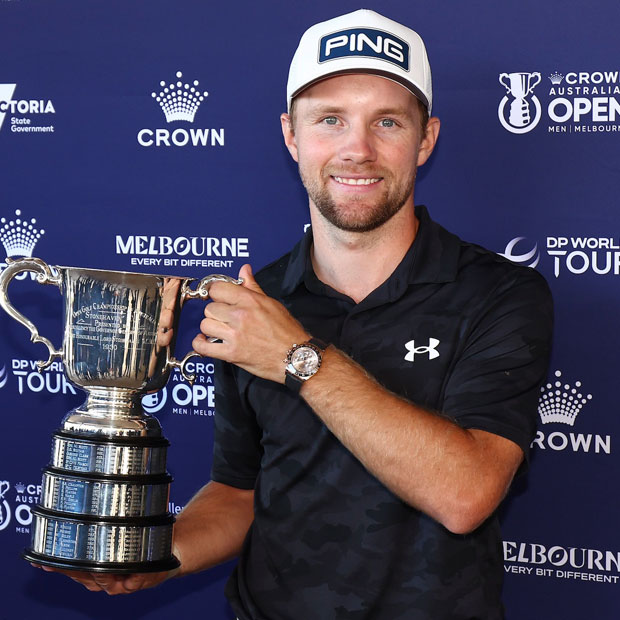Resetting the Scoreboard
A few simple changes to improve the PGA Tour product


From the outset of the schism in men’s professional golf, the PIF bursting onto the scene has not been the source of the PGA Tour’s problems. Their involvement merely revealed the cracks that already existed in the system, a system that only worked in the absence of competitive market forces.
The source of the PGA Tour’s problems is that it is a member-run organization, far more committed to maximizing playing opportunities and building in safety nets to retaining tour status for current membership than producing a merit-based product that engages fans. That’s how you end up with a system that gives starts to non-competitive players grifting off their accomplishments from yesteryear over hungrier, more talented up-and-comers. Why reset the scoreboard to zero when you could instead leverage the points you’ve earned in previous seasons, especially when you’re the ones writing the rulebook?
Faced with the threat of players defecting to LIV, the PGA Tour has finally been forced to renovate the product over the last couple of years, and most of the change has been in the positive direction. With the introduction of the signature event model, top players compete head-to-head more often than in past years. And by limiting field sizes at signature events, the tour has created a more competitive and consequential season-long race than previously existed, as the simplest route to qualifying for signature events is by finishing in the top 50 of the FedEx Cup standings.
Though some of the changes have been directionally correct, the Tour has failed to address some of the fundamental problems baked into its structure. Specifically, both the previous and current model distribute FedEx Cup points at all PGA Tour events, which is an underappreciated and massive problem. FedEx Cup points serve two related but distinct purposes: they determine a player’s ranking in the season-long points race, and they determine a player’s status on Tour year over year. In trying to serve dual purposes, neither task is accomplished elegantly, which harms the product.
By using one currency at all tournaments and commingling points from weak fields with points from strong fields, the PGA Tour has failed to solve what I’ll refer to as the Comparability Problem: they cannot provide standings that give fans an apples-to-apples comparison of where the best players stack up against one another.
Fans of leagues in other sports can always look at standings and understand roughly how the Kansas City Chiefs or the Los Angeles Lakers stack up with the competition. Though relative strengths of schedule or number of games played might differ slightly, the leagues strive to make team records as comparable as possible.
Checking standings is core to the experience of following any sport week to week. But as points are distributed at every event and different golfers play different tournaments, fans cannot look at the FedEx Cup points (or anywhere else) to decipher who has played the best on the PGA Tour in a given season. They’d have to make additional considerations like how many events each player has competed in.
For example, Matthieu Pavon is ninth in the FedEx Cup standings with 1,139 points earned this season. Nearly half of those points came from winning the Farmers Insurance Open, a tournament in which very few of the top players on the PGA Tour competed.
Another problem with distributing points at all events is that players are rarely placed on equal footing with one another. How so? A player who has qualified for all of the signature events, each of which distributes higher point values than a non-signature event, can tee it up in all of the most point-heavy tournaments on tour. And if he plays poorly in those events, he can just add non-signature stops to his schedule, affording himself additional opportunities to pick off points. Players who aren’t exempt into the signature events don’t have that option.
The problem is not that the so-called “mules” have insufficient playing opportunities. The problem is that they are always playing from behind. Is it possible for a non-signature player to make his way into the top 50 by racking up points in those non-signature events? Yes, but from The Sentry tournament onward, he’s always playing against a scoreboard that isn’t set to zero.
In other sports, higher-seeded teams may be given advantages, like the benefit of home field, but the scoreboard always resets to zero before each game. When scoreboards don’t reset to zero, you lose the essence of true competition. The epitome of this concept is the Tour Championship, an event with a staggered leaderboard format that’s trying to balance multiple goals while in the process forgetting it’s supposed to be a golf tournament. Competitions in which players start with different scores belie the spirit of true competition. And unsurprisingly, fans notice.
Where is your excitement level for this week’s Tour Championship?
— Joseph LaMagna (@JosephLaMagna) August 23, 2023
So here’s a proposed solution that solves many of the biggest problems with the PGA Tour schedule without completely destroying everything the tour has built.
Imagine that the PGA Tour product is just the signature events. All other PGA Tour-sanctioned events serve purely as stepping stones into the signature events, with two built-in calendar dates for promotion into all of the signature events.
Under this structure, FedEx Cup points would only be distributed at signature events. Identical to how the tour is structured today, at the end of each season, the top-50 players in the FedEx Cup standings would be exempt into all of the signature events the following season. In the fall swing, 20 signature event spots would be up-for-grabs. Importantly, every player would start the fall swing with zero points, not with their points total from the prior season. The 20 players who accrue the most points in the fall series would be promoted into all of the signature events the following season.
The other way to gain entry into the signature events would be through mid-season promotion. From January through the Players Championship, all signature events would have 70-player fields, as outlined above, with a 50-player cutline. Following the conclusion of the Players Championship, the top-10 performers in the non-signature events would be promoted into the signature events for the remainder of the season.
Not only would the Players Championship represent arguably the most prestigious tournament on the PGA Tour schedule to win, but now it’d have an added layer of serving as the point at which players earn their way into the biggest events for the rest of the year. Then, from the Players Championship through the rest of the regular season, the remaining signature events would have fields of 80 players with a 50-player cutline.
The system I’ve just laid out isn’t radically different from the existing product, yet it comes with many advantages over the current system. First, it’s very easy to communicate to a player what he needs to do to qualify for the highest-profile tournaments on the PGA Tour schedule. Finish in the top 50 of the season-long standings. Otherwise, finish in the top 20 of the fall swing. Else, finish in the top 10 of the non-signature events between January and the Players Championship. And at each of those steps in the process, you’re competing with other golfers on equal footing. The scoreboard always resets to zero.
Remember when the PGA Tour tried to replicate that F1 video in which several drivers were able to list season-long champions going back decades, but the problem was that none of the golfers could name more than one or two FedEX Cup champions? https://t.co/HLuc9TsWl9
— Garrett Morrison (@garrett_TFE) August 20, 2023
This system also helps mitigate the problem with sponsor exemptions. Say a player receives a sponsor exemption in February into the AT&T Pebble Beach Pro-Am, a signature event. You’re mad because you think you deserved the sponsor exemption more than he did, and you’re not currently exempt into the signature events either. The sponsor exemption playing instead of you isn’t hurting you as much now because he’s only earning points towards the season-end standings. He’s not earning points in the currency distributed at non-signature events, which go toward the mid-season promotion. You get the exact same opportunities he gets to earn a mid-season promotion. If neither of you earns a mid-season promotion, you’ll both tee it up in the fall series, and none of the points he earned at the AT&T Pebble Beach Pro-Am will matter because points won’t carry over to the fall in this system.
A system like this also creates a path for LIV golfers who want to return and allows for any other newcomers to seamlessly slip into the system. Finish in the top 20 of the fall swing and you immediately have full status the next season.
As vitally important as any other benefits, this system solves the Comparability Problem. At any point during the season, a fan could check the FedEx Cup standings and easily interpret the results. Since points would only be distributed at signature events, you’re effectively always comparing apples to apples when trying to determine who has had the best season on the PGA Tour. You would no longer need to consider how many events each golfer has played, or try to weigh the strength of fields in which they’ve earned their points.
No matter what shape the future of golf takes on, the Comparability Problem must be solved. To their credit, LIV Golf has already solved this problem. When you look at LIV’s standings, you see which golfers and teams have performed best during the season. All of the players have teed it up in the same events. Unlike with the PGA Tour, you don’t have to wonder how many events each golfer has played in.

LIV's structure does admittedly allow for a much cleaner way to track season-long performance. (PGA Tour/LIV Golf)
Is the system I just laid out perfect and impervious to criticism? No. There are going to be drawbacks, and I’m sure this system could be improved upon. If you think signature event fields should be slightly bigger than 70-80 players, I could be persuaded, and increasing field size would still work within this framework. Ultimately, though, the PGA Tour needs to land on a model that solves the key problems identified here. As long as they remain unsolved, you’ll be hard-pressed to formulate an answer when fans ask why they should watch most tournaments. Until that question is answered, fans will continue to tune out. So far this year, that’s exactly what they’re doing.
Leave a comment or start a discussion
Engage in our content with thousands of other Fried Egg Golf Club Members
Engage in our content with thousands of other Fried Egg Golf Members
Get full access to exclusive benefits from Fried Egg Golf
- Member-only content
- Community discussions forums
- Member-only experiences and early access to events











Leave a comment or start a discussion
Lorem ipsum dolor sit amet, consectetur adipiscing elit. Suspendisse varius enim in eros elementum tristique. Duis cursus, mi quis viverra ornare, eros dolor interdum nulla, ut commodo diam libero vitae erat. Aenean faucibus nibh et justo cursus id rutrum lorem imperdiet. Nunc ut sem vitae risus tristique posuere. uis cursus, mi quis viverra ornare, eros dolor interdum nulla, ut commodo diam libero vitae erat. Aenean faucibus nibh et justo cursus id rutrum lorem imperdiet. Nunc ut sem vitae risus tristique posuere.